Avoiding the horror of a mid-air collision between large and small aircraft requires planning, investment and vigilance from everyone who flies
‘If all else fails, immortality can always be assured by spectacular error.’ – John Kenneth Galbraith
The 53-year-old pilot had a reputation for caution and thoroughness and ‘was always very concerned about safety’ – or so his obituary said. An acquaintance described how he had twice delayed a flight because he was concerned the conditions were beyond his personal minimums. ‘We sat on the ground waiting for the weather to clear, even though it was VFR [visual flight rules] conditions and we could have flown,’ the acquaintance said.
Despite his documented caution and thoroughness, this pilot flew into a terminal control zone and collided with an airliner carrying 64 people. The death toll in the collision over Cerritos, California, that day, 31 August 1986, was 82, including 15 people going about their business on the ground and the private pilot’s wife and daughter.
In the 36 years since the Cerritos disaster, there has not been a similar deadly collision between a jet airliner and a general aviation aircraft in the vicinity of an airport. This is thanks in part to the TCAS (traffic collision avoidance system) that the US Federal Aviation Administration mandated in response to the crash. This specific type of disaster used to be a regular occurrence over the US in the 1960s and ‘70s, with mid-air collisions in 1967, 1969 and 1978 that killed more than 300 people.
No airliner and light aircraft have ever collided in flight in Australia, but as 2 recent Australian Transport Safety Bureau reports make clear, this has been at least partially due to sheer luck.
- On 19 October 2019, the pilot of a Piper PA-28 turned on to the base leg of the circuit at Albury Airport, NSW, in front of a Virgin Australia ATR 72 airliner with 70 people onboard. The crew of the ATR received a TCAS traffic advisory (TA) and conducted a missed approach. Separation between the 2 aircraft reduced to about 110 metres horizontally and 75 feet vertically.
- On 28 November 2020, a Jetstar Airways Airbus A320 was approaching to land at Ballina Byron Gateway Airport, NSW, when it passed beneath a Jabiru J230D which was on a private flight. The vertical separation between the 2 aircraft reduced to about 600 feet and, for a moment, there was no lateral separation between the aircraft.
One of these near misses took place at a towered airport, Albury, the other near a non-towered airport. Each involved failure of the 4 main defences against collision – planning, procedure, technology and vigilance.
Planning
For private pilots, what you do before the flight can make the difference between it being a pleasure or an ordeal, or between routine and disaster.
- Plan your flight to arrive at times when no airline flights are scheduled at your destination airport; likewise, if you are transiting airspace around a busy airport.
- Do the fiddly stuff on the ground before you go: have your en route and destination information at hand before you climb aboard, and program your GPS before you take off. Yes, it sounds simple and obvious but not everyone does it.
- Clean your windscreen.
Rehearsal is like planning. Musicians and actors rehearse and so should pilots. Rehearse the flight or critical parts of it by ‘chair flying,’ with checklists and radio frequencies at hand, if you are even slightly unsure or unfamiliar with its details. Mental practice has been shown to produce similar responses in the brain to actual practice.
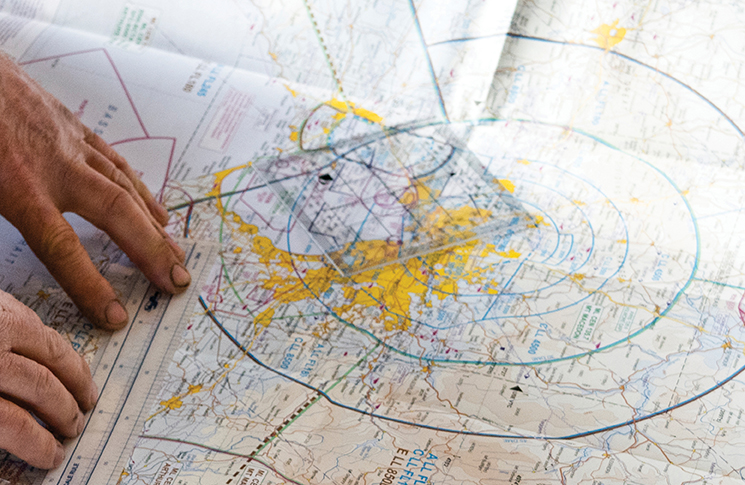
Procedure
Radio calls and position reports can seem like the last straw in a busy workload but they exist for a reason – to assist separation and protect all traffic near the aerodrome. Each missed call or report weakens that protection.
- Tune and check radio frequencies before you enter the airport traffic area.
- Announce your position starting 10 miles out at non-towered airports.
- Listen for reports from other inbound traffic. Report entering downwind, turning downwind to base, and base to final.
- If you are communicating with ATC on the way to the airport, monitor the common traffic advisory frequency (CTAF) on your second radio.
- Identify the airport at the beginning and end of each transmission.
- If you are unsure about the location of another aircraft on the frequency, ask.
- Remember, there may be aircraft without radios in the circuit.
- Slow down on initial approach and in the circuit. Slower speeds allow more reaction time and more time to safely complete your checks, calls and procedures.
- Report your position outbound and be aware that some pilots omit position reports after departure.
- If conducting an instrument approach, report distance in nautical miles rather than navigation waypoints.
Some TCAS-like features are now available on electronic flight bags (EFBs).
Investment: avionic countermeasures
The Cerritos tragedy spurred the development and adoption of TCAS. In Australia this system is required on all commercial turbine-powered transport aircraft with more than 30 passenger seats. TCAS acts as a last line of defence against a mid-air
collision by detecting the transponder signals of nearby aircraft. It predicts if they pose a collision risk and issues verbal traffic advisories, followed, if necessary, by resolution advisories, which tell the crew of each TCAS-equipped aircraft what avoiding action to take.
Requirements of performance, redundancy and certification make TCAS an expensive system, but some TCAS-like features are now available on electronic flight bags (EFBs).
These display nearby aircraft using their ADS-B transponders or display other aircraft using the same EFB system by using data from the mobile phone network. This is a partial solution: aircraft using different EFB service providers are not displayed, nor are simple Mode C transponders but, as EFB service provider Avplan says, ‘It is our opinion that having some/most information is better than none.’
What you do before the flight can make the difference between it being a pleasure or an ordeal, or between routine and disaster.
Automatic Dependent Surveillance Broadcast (ADS-B) has been compulsory to fly IFR in Australia since 2017. It provides ATC with the altitude, heading and speed of an aircraft; nearby aircraft can also share this information if they have ADS-B IN receivers. Unlike TCAS, ADS-B IN does not provide predictive resolution advisories but acts as an aid to situational awareness.
VFR aircraft owners who have had complying ADS-B equipment installed since 20 December 2021 may qualify for a $5,000 rebate from the Department of Infrastructure, Transport and Regional Development. The $30-million ADS-B package runs until mid-2023 and covers 50 per cent of the cost of purchasing and installing ADS-B OUT up to a maximum rebate of $5,000. CASA estimates the median price of installing a good quality certified ADS-B OUT unit at about $8,000, or $3,000 after the rebate.
For a little more, avionics makers including L3Harris and Avidyne offer ADS-B based active traffic avoidance systems that give TCAS-like advisories. These cost about $10,000–$13,000.
But collision-avoidance and situational-awareness technology need not necessarily be advanced. Sunglasses that block ultraviolet light improve visibility through haze, but polarised sunglasses can block the glint of sunlight off other aircraft. And using your lights improves your aircraft’s visibility to other pilots. You should use navigation and landing lights on approach, departure and climb out.
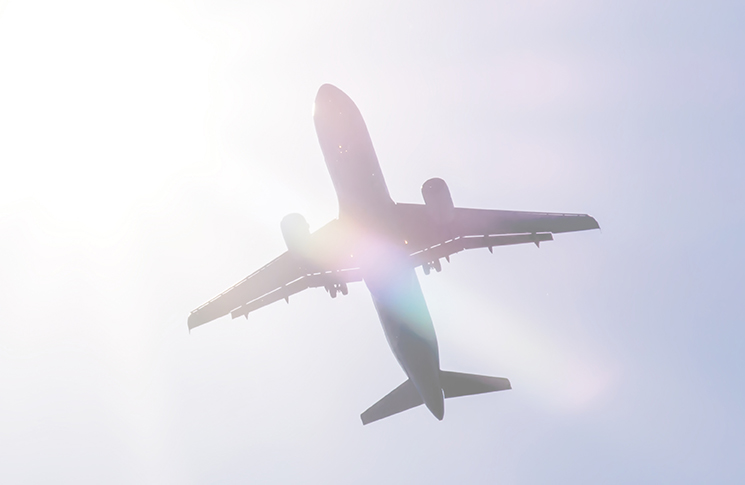
Vigilance: scanning
Your last defence against a mid-air collision is the analogue traffic collision and avoidance system in your head – your eyes.
A surprising fact about mid-air collisions is they occur most often in good weather. Analysis by US Aircraft Owners and Pilots Association (AOPA) found 87 per cent of collisions happen in VFR conditions.
A surprising fact about mid-air collisions is they occur most often in good weather.
Buried in that statistic is the fact that even with 20/20 vision or better, the human eye is about as well adapted for flying as the rest of the human anatomy. Our visual system is not evolved to detect and track very small objects which appear to move slowly until the second before impact. Because of this, see and avoid is inherently difficult (alerted see and avoid, where radio calls tell you where to look, is rated at 8 times more effective than simple unalerted see and avoid). But we can use the imperfect tools in our heads to their full potential by scanning effectively.
In aviation terms, the main problem with the human eye is it can only look at one thing at a time. The most acute part of our eye – the central zone of the retina known as the fovea – comprises only 1 per cent of our field vision. We lose 90 per cent of our visual acuity once we look anywhere outside of a 10-degree cone originating from the fovea.
The countermeasure is to consciously scan the sky with narrowly focused eyes. This is done not by sweeping the sky, which blurs your vision, but by a sequence of intense, fixated observations. Your eyes need one to 2 seconds to adjust before they can focus. Separating the sky into ‘blocks’ of 10 to 15 degrees and stopping in each ‘block’ from left to right is an effective scan technique. You can use side-to-side or front-to-side scanning patterns but you need to make a conscious effort to refocus on the farthest object in the distance – a cloud or mountain – to give the eyes a chance to break focus and spot possible conflicting traffic.
Other things you can do to improve your lookout are:
- make gentle S-turns during a climb to improve forward visibility
- use a cruise climb airspeed for a better view over the nose
- enlist passengers’ help in scanning for traffic.
See also: ‘Visual scanning technique’ at skybrary.aero
Read Shelley Ross’s story on ADS-B
Airline/GA collisions
PLACE Hendersonville, North Carolina, US
DATE 19 July 1967
AIRCRAFT Boeing 727/ Cessna 310
CONDITIONS IFR
DEATHS 82
PLACE Shelby County, Indiana, US
DATE 9 September 1969
AIRCRAFT McDonnell-Douglas DC-9/Piper PA-28 Cherokee
CONDITIONS VFR
DEATHS 83
PLACE San Diego, California, US
DATE 25 September 1978
AIRCRAFT Boeing 727/ Cessna 172
CONDITIONS VFR (IFR pilot under instruction)
DEATHS 144 (including 7 on ground)
PLACE Cerritos, California, US
DATE 31 August 1986
AIRCRAFT McDonnell-Douglas DC-9/Piper PA-28 Archer
CONDITIONS VFR
DEATHS 82 (including 15 on ground)
Air Transport collisions include
- Iberia Flight 504 /Spantax Flight 400, Spain, 5 March 1973
- Aeroflot Flight 31/Aeroflot Flight 7957, USSR, 9 September 1976
- British Airways Flight 476/ Inex-Adria Flight 550, Yugoslavia, 10 September 1976
- Aeroflot Flight 7628/Aeroflot Flight 7880, USSR, 11 August 1979
- Saudia Flight 763/Kazakhstan Airlines Flight 1907, India, 12 November 1996.
Military/Air transport collisions include
- Hughes Airwest Flight 706/US Air Force F-4 Phantom, USA, 6 July 1971
- ANA Flight 58/Japan Air Self-Defence Force F-86 Sabre, Japan, 30 July 1971
- Aeroflot Flight 811/Soviet Air Force Tupolev Tu-16K, USSR, 24 August 1981
- Iran Air Tours Tupolev Tu-154M/Iranian Air Force Sukhoi Su-24, Iran, 8 February 1993.

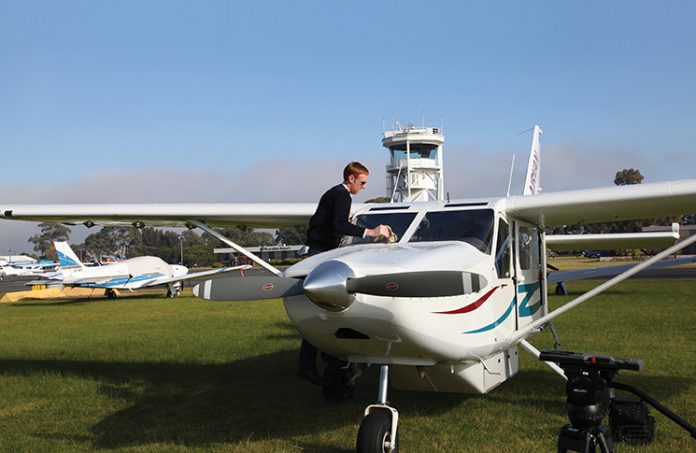
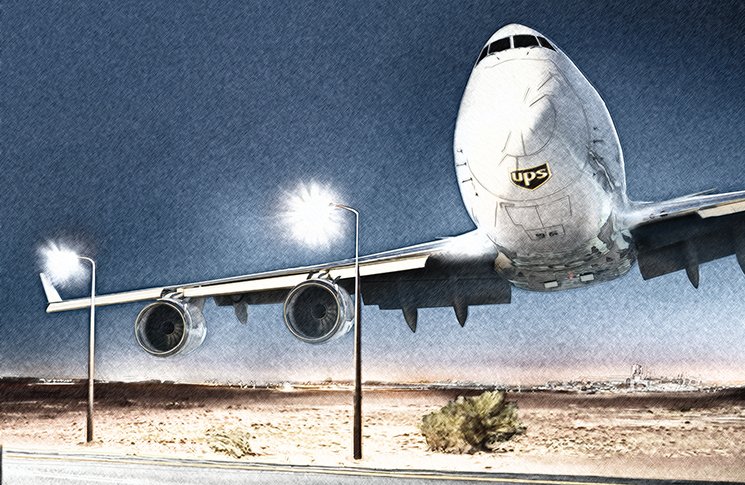
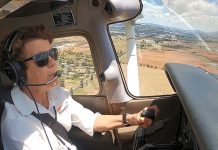
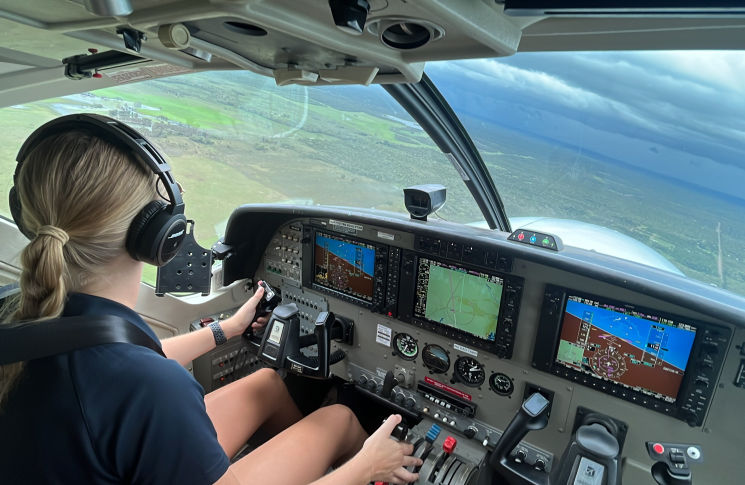

Even on approach almost ALL jet airliners and many turboprop ones too will be still travelling at or near 3 nautical miles per minute. On downwind into base they may be closer to 4 nms/min. They can over take almost ALL GA aircraft easily and move into an impact position very quickly.
Airline crew are flying at least partly on instruments all the time right to touch down so do NOT assume they have the same eyes out conditions as a GA aircraft pilot.
Fact is whatever you do, you’re not bullet proof. Places like Ballina, Dubbo, Merimbula and many more are dangerous places because the ‘sort yourselves out’ mentality of CTAF’s is prone to human error and hence flawed. Intersecting runways, different radio frequencies and high traffic volume increase the risk. The Mangalore accident perhaps being a case in point. Sooner or later there’s quite likely to be a serious human error, possibly involving an airliner.
Simple. Close uncontrolled airports to all private flying within a 15 minute block either side of scheduled RPT aircraft. THAT will protect the paying public somewhat. It isn’t like RPT aircraft have variable arrival times. They tend to come and go the same time every day. So, if you are flying a GA aircraft in the vicinity of an uncontrolled airport with RPT arrivals and departures, DON’T.
Hmmm – so my home airport, Wagga Wagga, has three REX and three Qantas flights a day to and from Sydney, and a roughly similar number to and from Melbourne. So that’s somewhere around 24 RPT movements a day.
15 minutes either side of each of those movements won’t leave much time for us PPLs – not to mention the freight, charter, air ambulances, REX (sorry, AAPA) trainees and occasional military traffic. Time for a second airport for Wagga Wagga…..?
You clearly don’t operate out of airports like Moruya and Merimbula as I do Kelly or you would realise that your statement “ it isn’t like RPT aircraft have variable arrival times” is patently false .Rex operate here on triangulated routes which combined with weather and crew duty limitations coupled with aircraft unserviceabilities often results in delays and or cancellations on a regular basis. The answer is to do what is recommended in the above . Ie have your Transponder/ ADSB on , the radio selected to the correct frequency and communicate and keep a proper lookout. Seems to work pretty well even with the presence of a skydiving operation at Moruya.